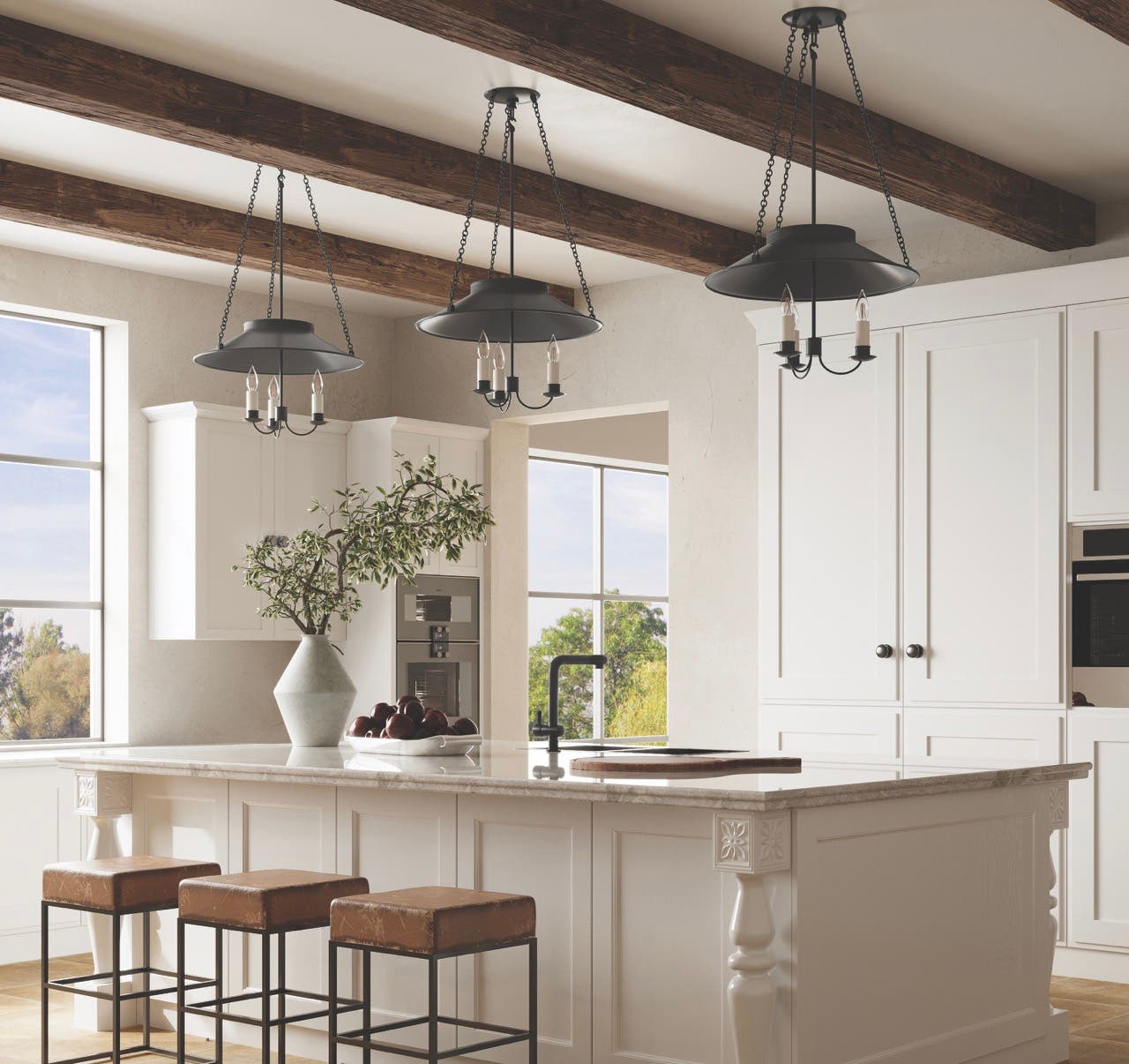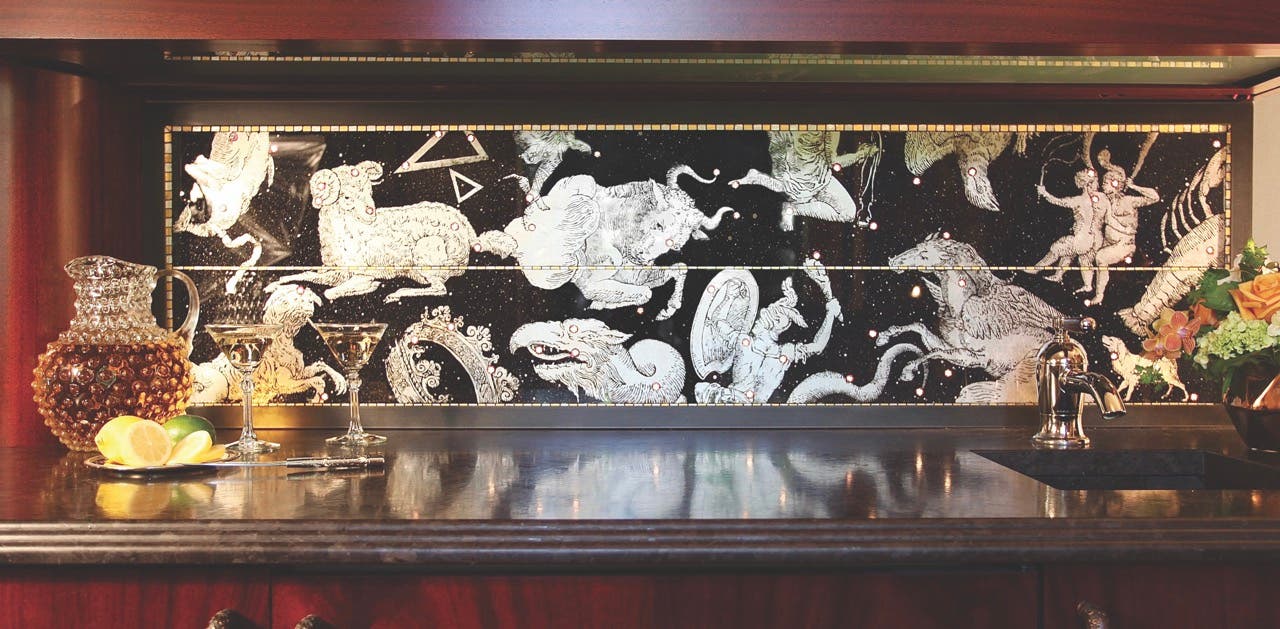
Product Reports
Mirroring the Past
Eglomise, the ancient art of painting and gilding on the back side of glass, is being used in a variety of ways to add an aesthetic dimension to interior projects ranging from historical restorations and traditional recreations to contemporary settings.
The technique, which dates to Roman times, was revived in the 18th century by French decorator and art dealer Jean-Baptiste Glomy and has waned and waxed in popularity through the years.
For the last couple of decades, four-time ICAA award winner Simes Studios has been creating eglomise artworks for tiles, table tops, sliding cabinet doors, kitchen backsplashes, and even entire walls and ceilings.
The Chicago-based applied arts studio, owned and operated by artists Jorge and Cindy Simes, focuses on custom residential work commissioned by interior designers and architects around the country.
Established 35 years ago when the couple met in Buenos Aires, Simes Studios works in a variety of techniques in addition to eglomise that include murals, glazed and textured finishes, trompe l’oeil, Venetian plaster, stenciling, gilding, mirroring and etching, faux bois and marble, and painted furniture and floors.
“We specialize in finding innovative ways to create a contemporary aesthetic incorporating current and environmentally friendly materials while paying respect to revered art techniques and the exceptional quality of the past,” says Jorge.
Simes Studios, which employs a half dozen full-time artists, typically works on two to three projects simultaneously.
“One of the reasons people keep us in mind is that you won’t find anything we do in a catalog; we’re an images’ laboratory,” says Jorge.
Simes Studios’ exploration of eglomise, which Jorge loves because “the glass works as a prism—pieces have a jewel-like quality,” began in 2005.
As with all of the firm’s techniques, the collaborative process starts with a conversation with the client. “The thoughts become shapes and colors that click,” Jorge says.
Once the artwork is developed and approved, Simes Studios creates sample boards and does what Jorge describes as “a battery of tests” to determine the most effective manner of crafting the work and which types of painting and gilding are most appropriate.
“The process is similar to what a chef does,” he says. “We have a ‘kitchen’ with hundreds of recipes for replication that include everything from mirroring and glazing to metallic gilding and antiquing, and we keep experimenting and adding to it.”
Typically, Simes Studios executes eglomise works on quarter-inch-thick prime-quality, low-iron glass, which doesn’t produce a green tint that distracts from the purity of the design’s colors.
The technique can be exploited to enhance a host of images.
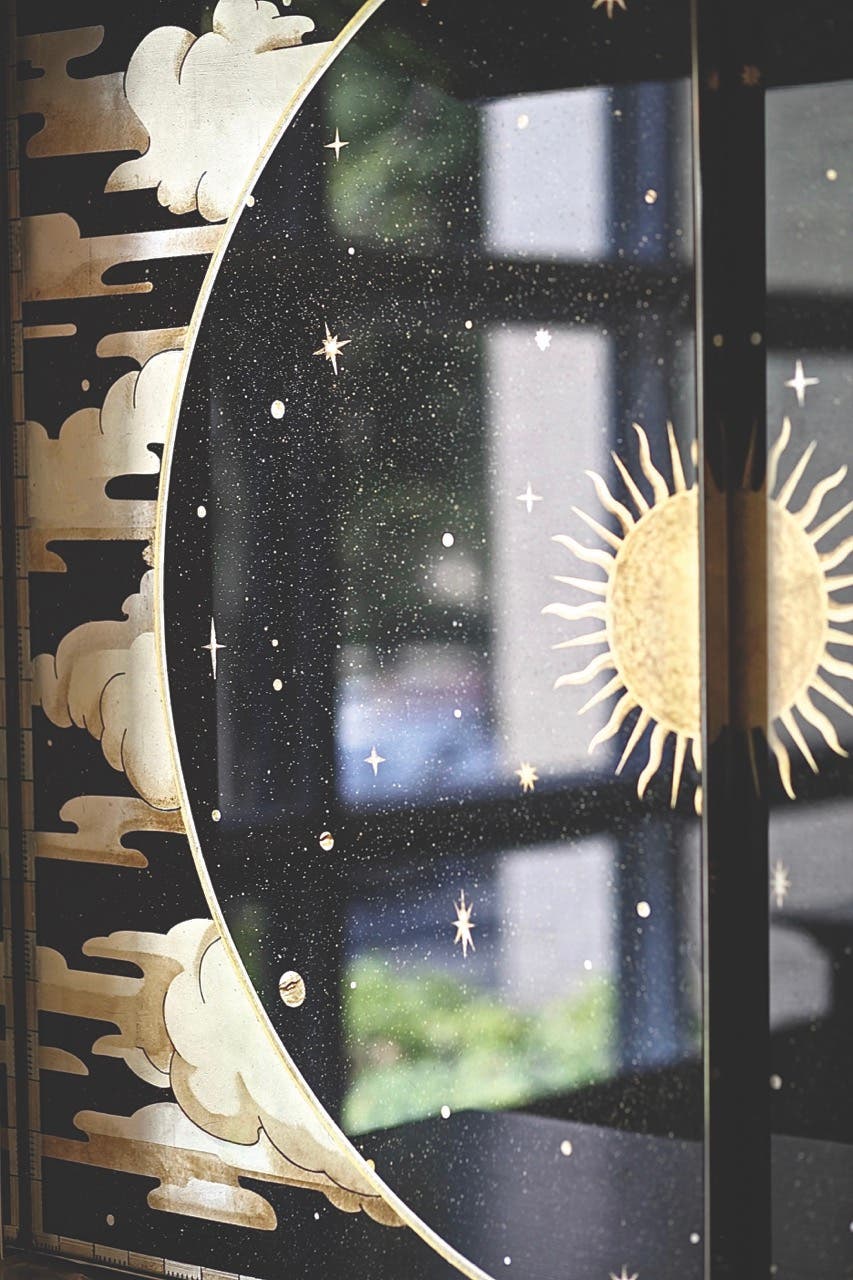
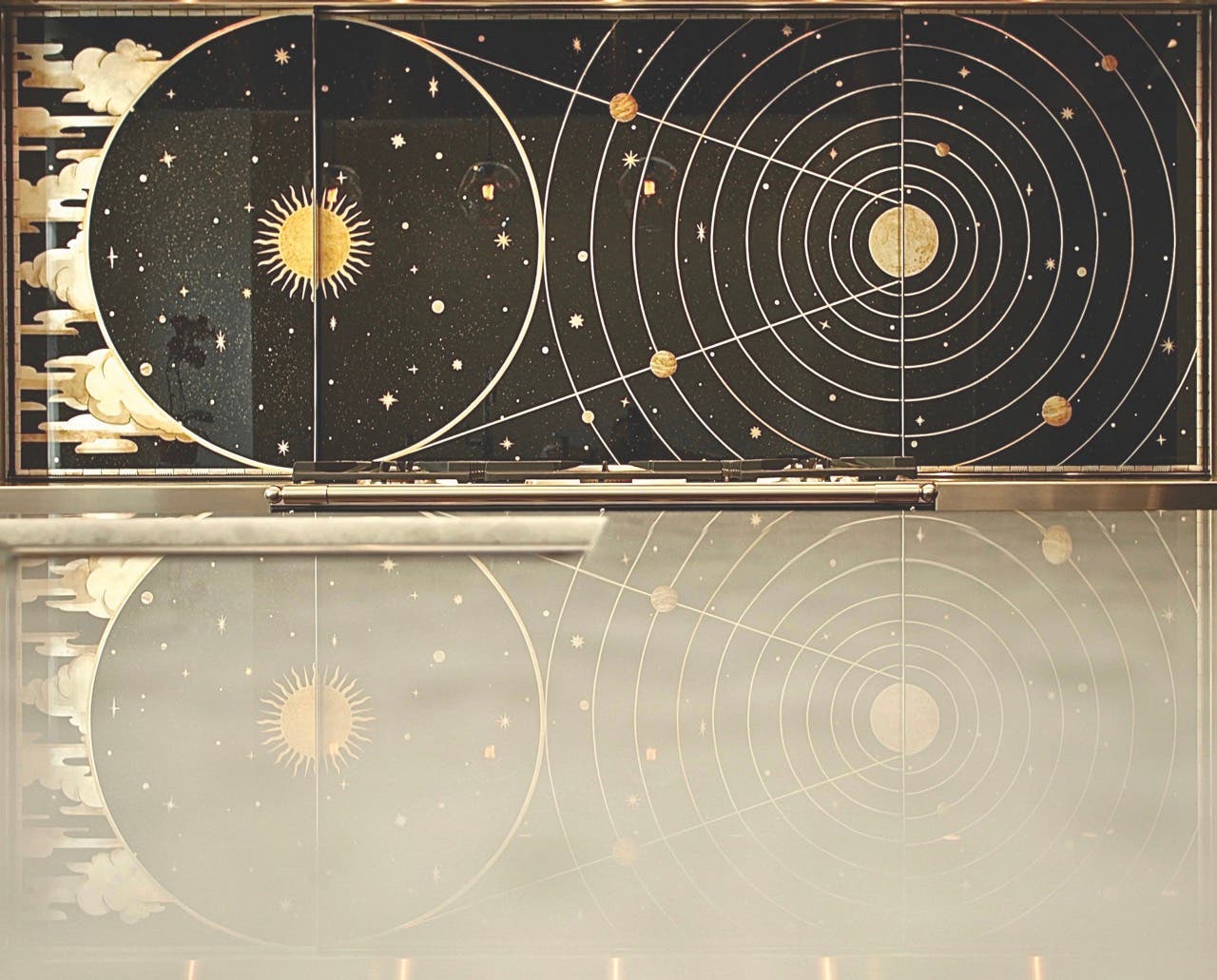
For the backsplash of a bar whose theme was the constellations, Simes Studios accomplished different degrees of reflectivity with gilded platinum, white and yellow gold, and silver cranberry leaf, and created tiny, bright stars that are illuminated by super-thin LED lights.
And on a kitchen backsplash that depicts arcs of shiny silver Champagne bubbles, the image is designed to be stunningly reflected in the black granite countertop.
Working with the glass, Jorge adds, requires extra effort because the images must be executed backwards, which is particularly tricky when calligraphy is involved in the design.
In one prototype designed by Jorge, the words of the Robert Frost poem “The Freedom of the Moon”—“I’ve tried the new moon tilted in the air … As you might try a jewel in your hair”—reflect and illuminate the mystery of this fascinating orb.
“When lit from a certain angle, the eglomise casts a complex evanescent light effect, resembling the moon’s surface in the manner of magic mirrors,” Jorge says, adding that the work incorporates silvering, antiquing, powder and leaf gilding, and painting. “This would be very striking if installed on one wall in a way that you would see the reflection in the adjacent wall.”

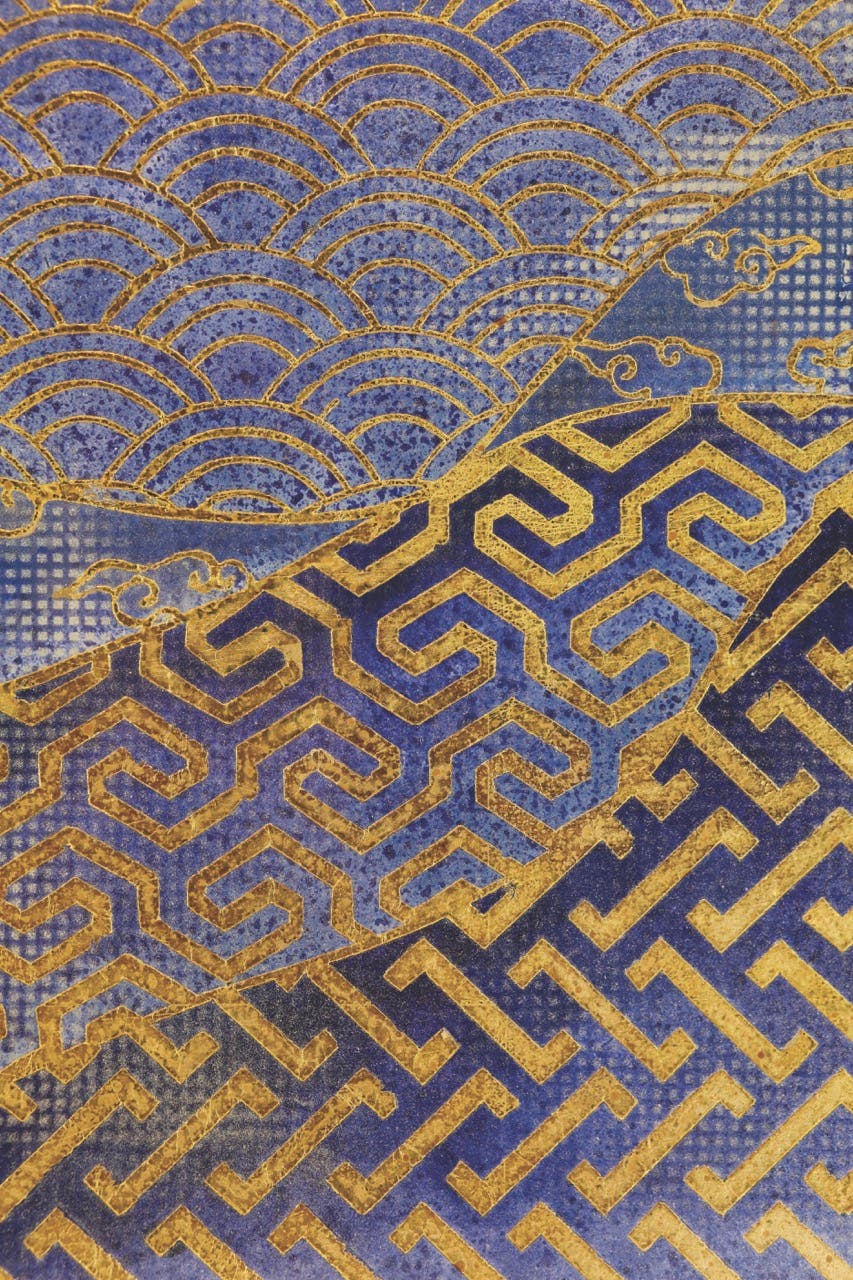
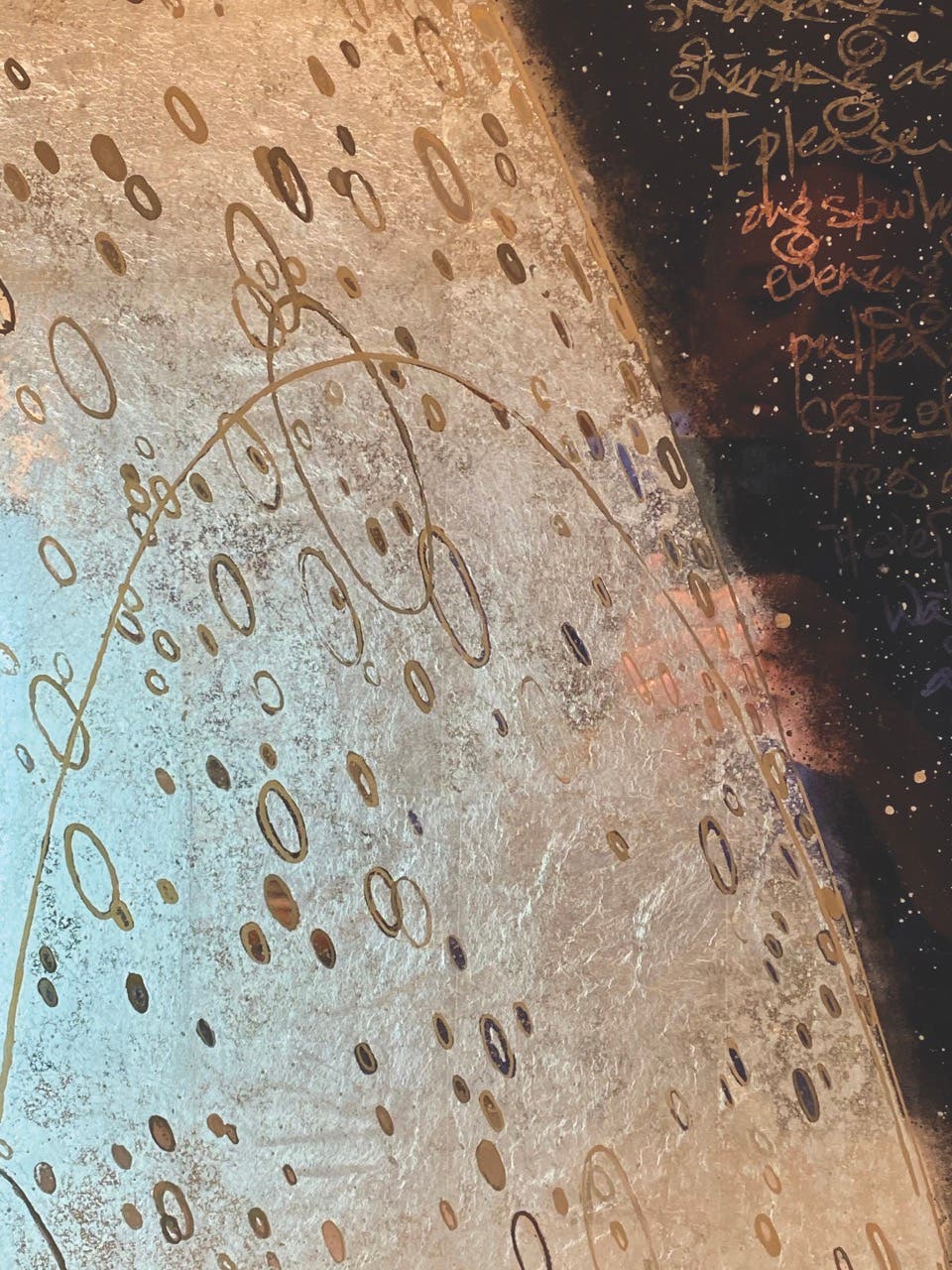
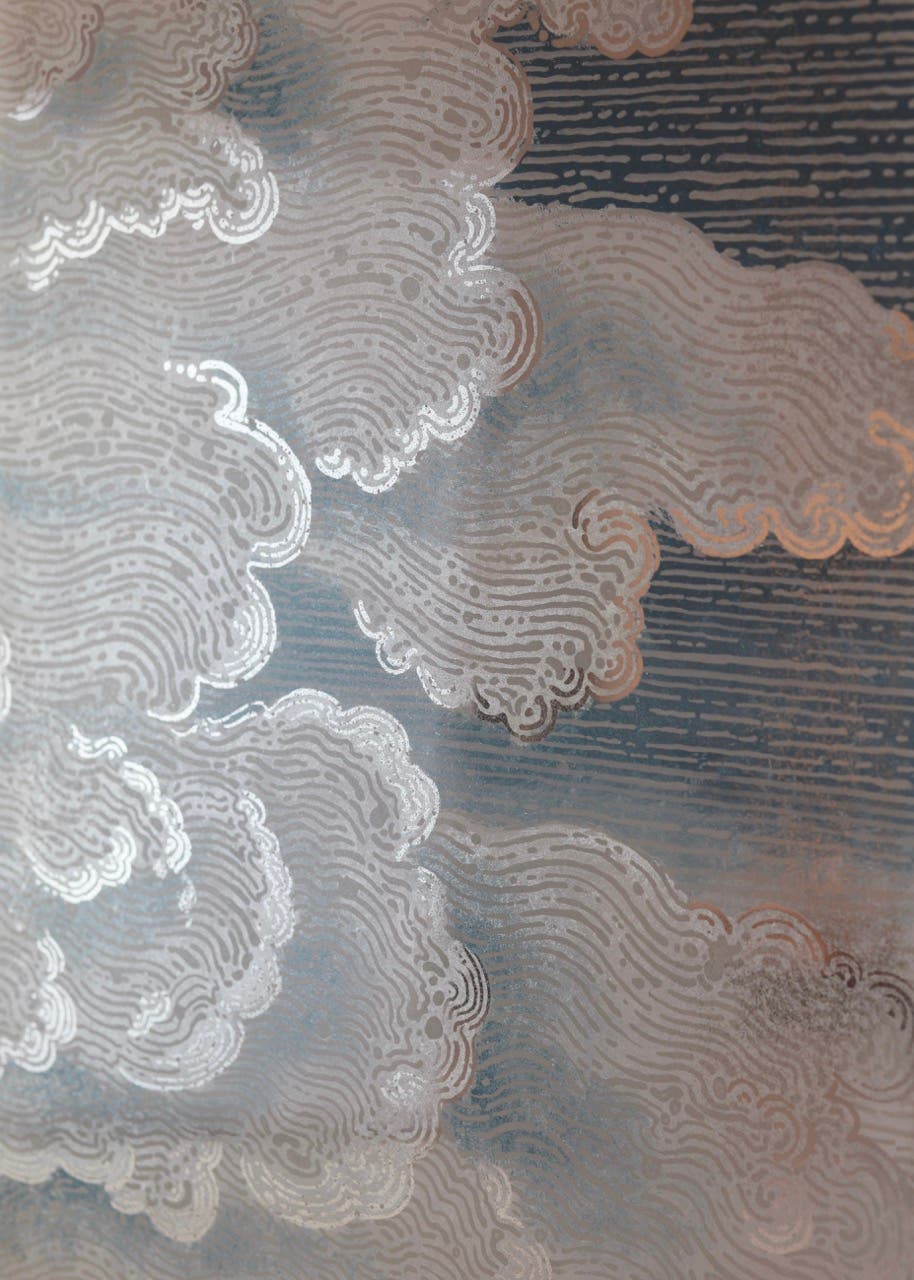
Eglomise is an extremely versatile technique, as evidenced in Jorge’s prototype “Imperial Kimono,” which was inspired by a museum exhibition on the ceremonial robes worn by emperors and features oil-base gilding, metallic gilding, and oil painting.
“It plays with different degrees of reflectivity in the gilded sections and intensifies the chroma in the blue- and white-hued areas,” Jorge says.’’’
The evocation of the woven surface to glass loses nothing in translation: When you see it, your response is to reach your hand out and touch it.
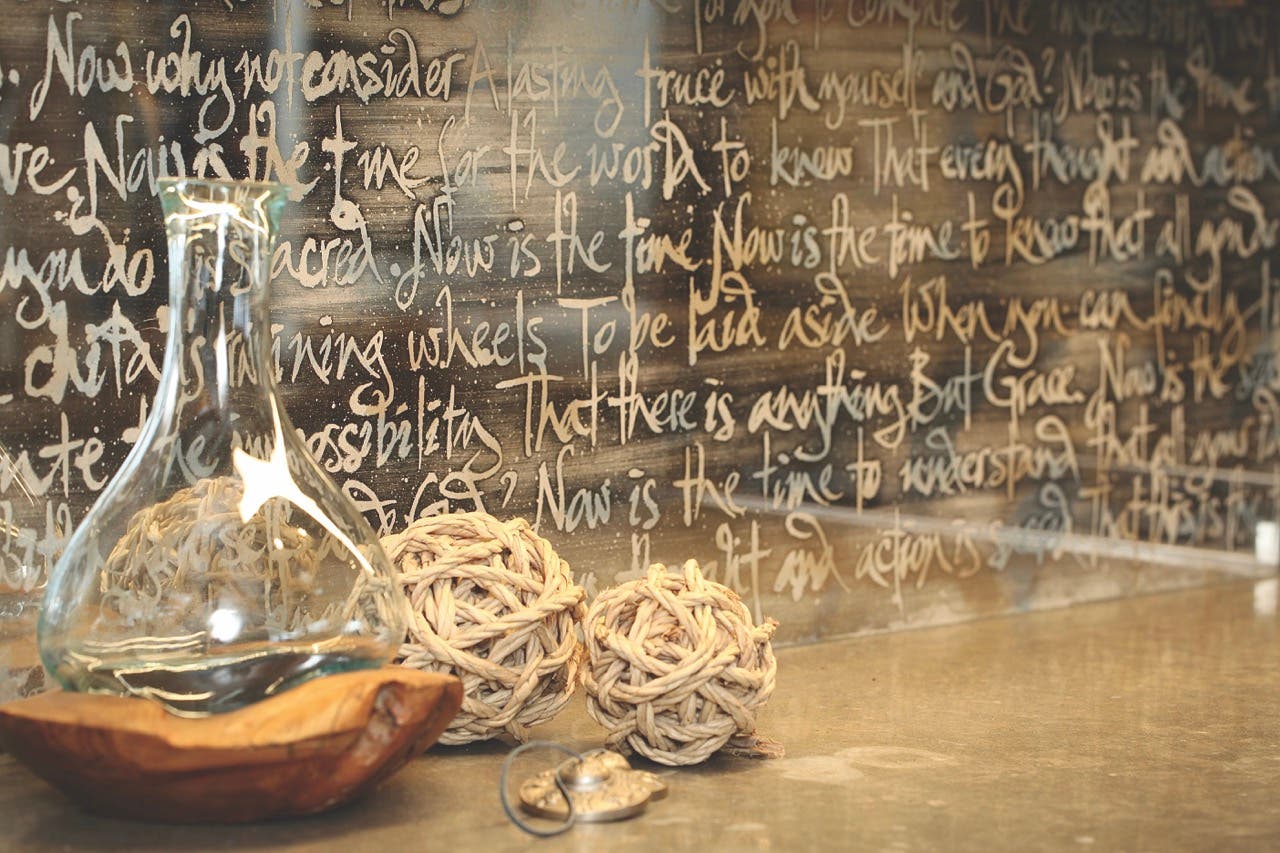
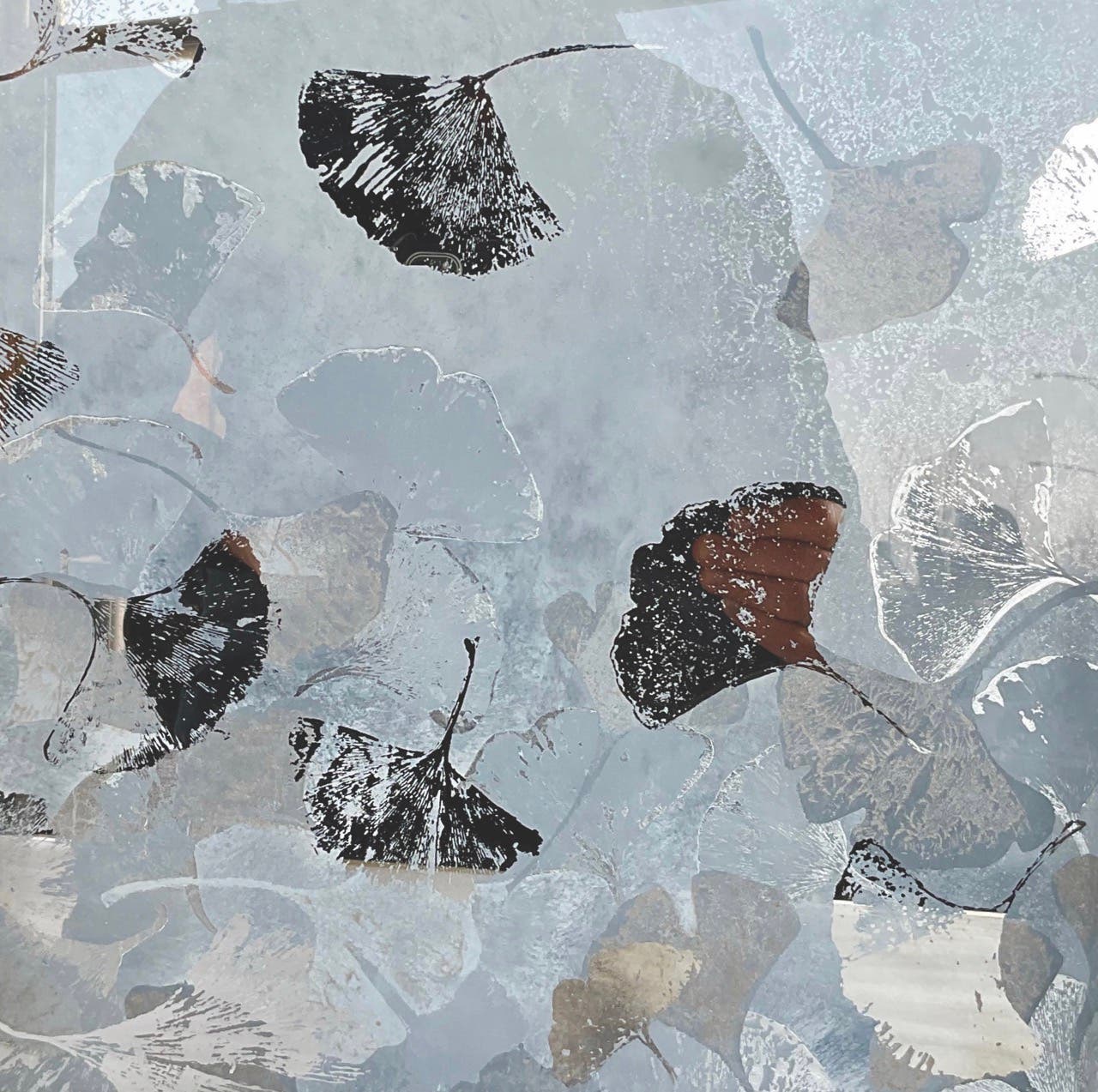
One of Simes Studios’ most ambitious projects was the ICAA-award-winning Art Deco-inspired mural produced for a bar in a Chicago residence that was designed by Steven Gambrel and Liederbach & Graham Architects.
The mural, which depicts The Windy City’s skyline, has an added dimension: The large gilded, mirrored image with the red accent color is executed on special slightly wavy glass to give it age.
“This took nine months to complete,” Jorge says. “The glass is so hyper-clear that you have to touch it to know it’s glass, and it’s super-thin—it’s only one-eighth of an inch thick, which meant we had to be extremely careful not to break it. We were walking on eggshells every time we moved a panel.”
It, like all the eglomise works Simes Studios creates, is designed to last a lifetime.
“Eglomise works do not have to be babied—the design is on the back so you can’t harm it,” Jorge says. “You can clean them with Windex.” TB







